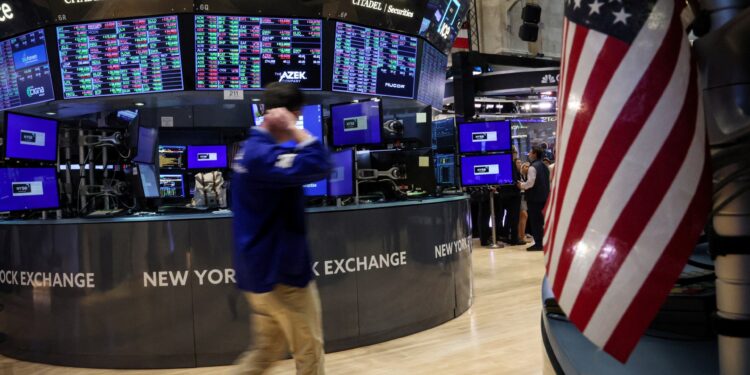The US -US Street stock markets closed with sharp losses of about $ 6.6 trillion over two days, this came after US President Donald Trump announced on Thursday the new customs duties on various commercial partners.
The main stock indicators were closed by standard declines in Friday’s trading, in continuing the repercussions of customs duties. This contributed to the escalation of the trade war between Washington and Beijing, after China announced the imposition of new customs duties on all American goods, in response to the Trump administration decisions.
The Standard & Poor’s index for the 500 largest companies, Nasdaq, and Dow Jones/ the largest weekly loss since March 2020. Below is an explanation of the losses of American indicators:
- Dow Jones Industrial Index
He decreased by more than 2,200 points on Friday, after a previous decline of 1679 points on Thursday, which represents his worst performance since the Korona pandemic, this decrease equivalent to a decline of 5.5% on Friday alone. - Standard & Poor’s 500 index
He witnessed a decrease of 6% on Friday, which led to a total weekly loss of 9.1%. - Nasdak index
He entered the BEAR MARKET market after it decreased by 5.8%, which means a 20% decrease from its peak in December.
The height of the fear scale
The main “fear scale” in Wall Street rose to the highest level in 8 months, while other market indicators showed the increasing concern of investors about the repercussions of the comprehensive fees imposed by President Trump.
Global stock markets fell and oil prices decreased for the second day in a row on Friday, with the direction of the Nasdaq index, the complex towards a long drop, after China imposed new customs duties on all American goods, which raised fears of an expanded global trade war. The fluctuation index on the American Chicago Commercial Stock Exchange, a scale based on the stock of stock investors’ anxiety about market expectations in the short term, rose about 15.54 points to 45.56, at the highest level since last August.
“The reference to the fluctuation index to 40 is a sign of fear for sure,” said Joe Tijai, a wallet manager at Raconal Ikewiti Armour Vand. “You usually see an index of 40 when there is something more than the usual sales … some kind of credit risk and the risk of profit margin, which may cause an infection that may extend to other asset categories,” he added. Investors who have been affected by acute sales this year monitor the scale of volatility as an indication of market pressure.



